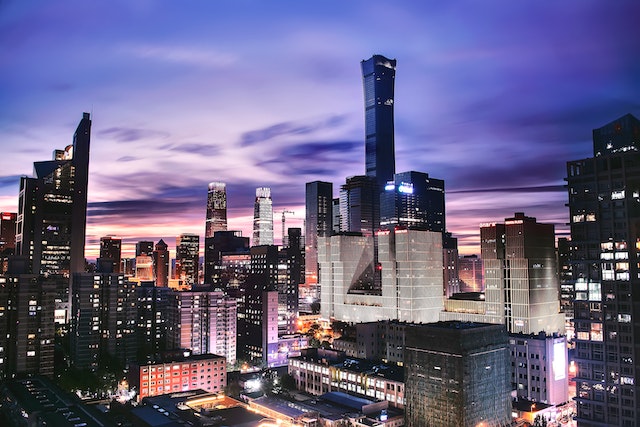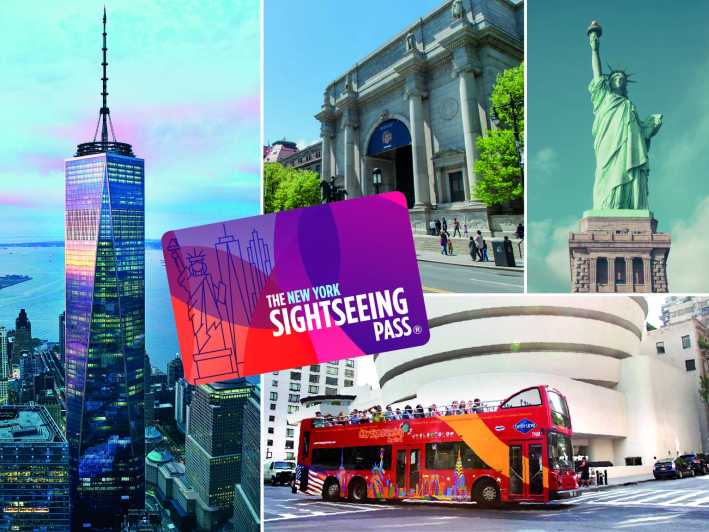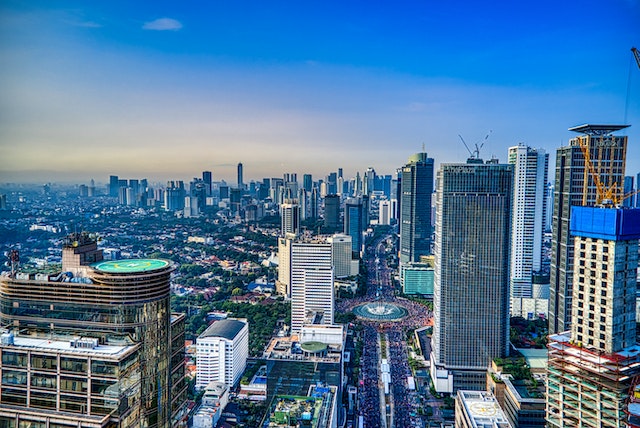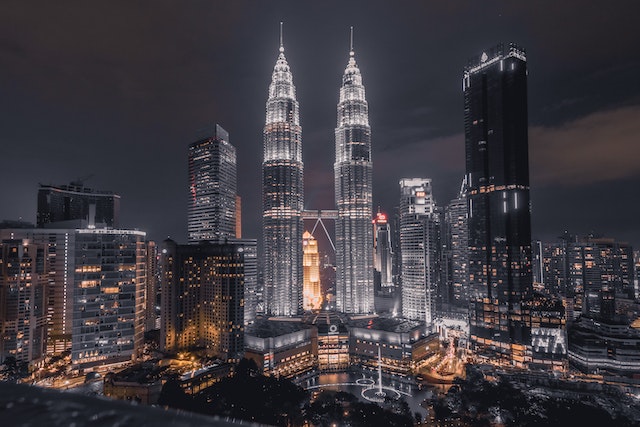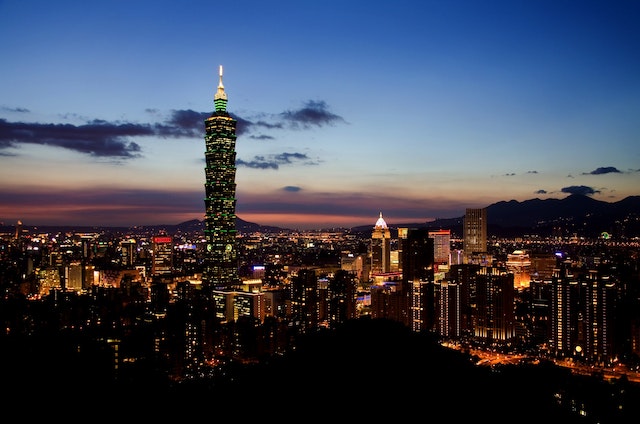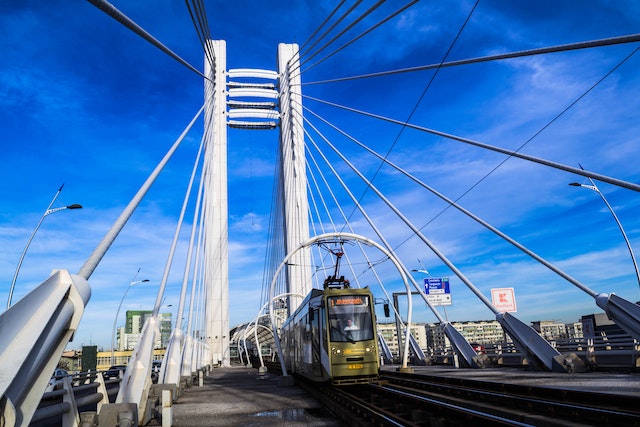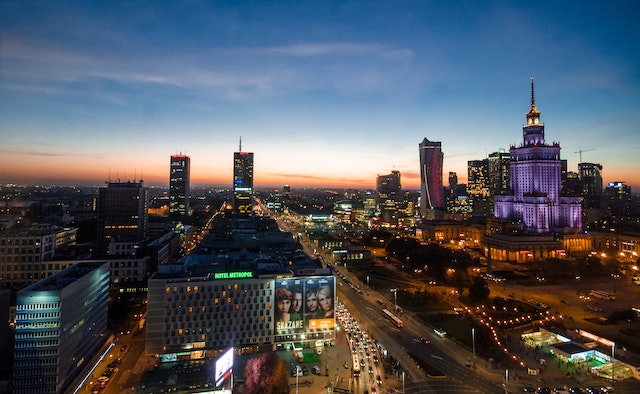Welcome to a journey that bridges continents and cultures, as we embark on a thrilling expedition from the bustling city of Atlanta to the magnificent capital of China, Beijing. This travel literary invites you to accompany us on a voyage that transcends geographical boundaries, taking us from the vibrant landscapes of Atlanta to the storied ancient wonders of Beijing.
B. Purpose of the Travel Literary
The purpose of this travel literary is to provide you with a vivid and immersive account of the mesmerizing excursion from Atlanta to Beijing. Through the power of words, we seek to transport you to the heart of this remarkable adventure, guiding you along the path of discovery and enchantment that awaits in the enigmatic city of Beijing.
C. Anticipation of Discovering Beijing’s Culture and History
As we set our sights on Beijing, our hearts brim with anticipation and curiosity. In the midst of this fascinating journey, we are eager to delve deep into the rich tapestry of Beijing’s culture and history. From the imposing grandeur of the Forbidden City to the serenity of the Temple of Heaven, we anticipate unearthing the hidden stories and centuries-old traditions that have shaped this remarkable city.
With each step through the ancient alleyways and vibrant streets, we yearn to embrace the spirit of Beijing, immersing ourselves in the customs, cuisine, and daily life of its gracious inhabitants. From the iconic Great Wall to the modern wonders of the metropolis, we are poised to witness the seamless blend of the old and the new that defines Beijing’s allure.
In this travel literary, we invite you to join us on an unforgettable odyssey, where the colors of Atlanta merge with the hues of Beijing, and where the pages of history come alive to create a timeless tale of exploration and wonder. So, buckle up and prepare to set sail across continents, for Beijing beckons with open arms, ready to unravel its secrets and embrace us in its captivating embrace. Let us embark on this journey together, where the past meets the present, and where the promise of a profound cultural awakening awaits us in the heart of Beijing, China.
Choosing the Best Airline
A. Comparing Different Airlines
As we set out on our expedition from Atlanta to Beijing, one of the crucial decisions is selecting the most suitable airline for our journey. With several options available, it becomes essential to compare and contrast various airlines, each offering unique features and services.
Within the vast sea of choices, airlines like Delta and Air China stand out as top contenders. Known for their reliability and exceptional customer service, they have established themselves as preferred carriers for international travel. A comprehensive evaluation of factors such as flight availability, departure and arrival times, and customer reviews will guide us in making an informed decision.
B. Recommendation: Emphasizing the Benefits of a Direct Flight
After careful consideration, a direct flight emerges as the preferred choice for our travel from Atlanta to Beijing. The advantages of a non-stop flight are manifold, guaranteeing a smoother and more time-efficient journey.
Opting for a direct flight means avoiding the inconvenience of layovers and the need to switch planes, saving us precious hours that can be better spent exploring the wonders of Beijing. With reduced travel time, we can arrive at our destination feeling more refreshed and ready to immerse ourselves in the city’s cultural treasures.
C. Comfort and Amenities On Board
In our quest for an enjoyable travel experience, the comfort and amenities offered by the chosen airline are paramount. Both Delta and Air China excel in this regard, ensuring a relaxing journey amidst the clouds.
Spacious and comfortable seating arrangements provide ample legroom, promoting a pleasant in-flight experience. Entertainment options, such as individual screens with a wide selection of movies and TV shows, guarantee a pleasurable passage of time during the long-haul flight.
Additionally, the airlines’ commitment to excellent service extends to the culinary offerings on board. From delectable international cuisines to refreshments and snacks, we are assured of a delightful gastronomic journey as we traverse the skies.
With our sights set on Beijing, choosing an airline that prioritizes passenger comfort and satisfaction becomes a key factor in setting the tone for a remarkable travel experience. As we board the aircraft, we can rest assured that we are in capable hands, ready to soar towards the enchanting destination that awaits us in the heart of China.
Selecting the Ideal Travel Day
A. Analyzing Peak Travel Seasons
Before embarking on our journey from Atlanta to Beijing, it is prudent to analyze the peak travel seasons in both cities. By understanding the busiest times for travel, we can strategize and ensure a smoother and more enjoyable trip.
In Atlanta, peak travel seasons often coincide with holidays, school breaks, and major events. Summer, around June to August, witnesses a surge in travel as families embark on vacations. Similarly, the holiday season, encompassing Thanksgiving and Christmas, experiences increased air traffic.
Beijing’s peak travel seasons, on the other hand, revolve around Chinese national holidays, such as the Spring Festival (Chinese New Year) in late January or early February, and the Golden Week holiday in October. During these periods, domestic and international tourists flock to Beijing, leading to crowded attractions and higher travel costs.
B. Weekday vs. Weekend Travel Considerations
When contemplating the ideal travel day, we must weigh the advantages and disadvantages of weekday versus weekend travel. Weekends are popular choices for leisure travelers, leading to busier airports and potentially higher airfares. Conversely, opting for a weekday departure offers a more tranquil airport environment and may present cost-saving opportunities.
Additionally, weekdays may provide more flexibility in choosing preferred flight times, allowing us to plan our itinerary seamlessly. Moreover, a weekday departure from Atlanta might coincide with the beginning of the workweek in Beijing, affording us the opportunity to blend seamlessly into the city’s rhythm upon arrival.
C. Suggested Day: Departure on Wednesday
Considering all factors, Wednesday emerges as the suggested day for our departure from Atlanta to Beijing. Midweek travel often sees fewer travelers, translating to less crowded airports and potentially more affordable airfares.
Choosing a Wednesday departure also aligns with our strategy to avoid peak travel seasons, ensuring a more relaxed and enjoyable travel experience. With fewer fellow passengers and a smoother airport experience, we can begin our journey with a sense of ease and anticipation.
Moreover, this midweek departure allows us to optimize our time in Beijing. Arriving on a Thursday, we have the advantage of starting our exploration of Beijing’s captivating landmarks and immersing ourselves in its cultural treasures at the beginning of the weekend when locals and visitors alike engage in various activities.
In conclusion, a Wednesday departure not only facilitates a stress-free travel experience but also sets the stage for an unforgettable adventure in Beijing. As we take to the skies on this chosen day, excitement surges through us, knowing that an enchanting city awaits us on the other side of our flight. Let us embrace the wonders of Beijing with open hearts, ready to savor every moment of this transformative journey.
Itinerary
A. Day 1: Departure from Atlanta
As we bid farewell to Atlanta, we embark on an exhilarating journey to Beijing, filled with anticipation and excitement. To ensure a seamless start to our adventure, let us pay attention to essential details on this departure day.
- Packing Tips and Essentials
Before we set foot on the aircraft, thoughtful packing becomes the key to a hassle-free travel experience. As we prepare our suitcases, here are some valuable packing tips:
a. Travel Documents: Double-check that we have our passports, visas (if required), and any other necessary travel documents securely stowed in a travel pouch or bag.
b. Clothing Selection: Considering the diverse weather in both Atlanta and Beijing, it is wise to pack clothing suitable for changing seasons. Lightweight and comfortable attire for the warm climate in Atlanta contrasts with layers for the varying temperatures in Beijing.
c. Footwear: Comfortable shoes are essential for sightseeing in Beijing’s vast landscapes, and it’s a good idea to include a pair suitable for long walks and explorations.
d. Travel Adapters and Chargers: Don’t forget travel adapters to ensure our electronic devices remain charged and functional during our journey.
e. Medications and First Aid: Pack any necessary medications in their original containers, along with a small first-aid kit for unforeseen circumstances.
f. Snacks and Water Bottle: Carry some snacks and a refillable water bottle to keep ourselves energized and hydrated during the travel.
- Weather in Atlanta and Beijing
As we depart from Atlanta, let us take a moment to consider the weather conditions in both cities:
In Atlanta, the current season will dictate the weather. During the summer months (June to August), the climate is typically warm and humid, with average temperatures ranging from 75°F to 90°F (24°C to 32°C). Spring and fall offer more moderate temperatures, ranging from 50°F to 75°F (10°C to 24°C). Winter in Atlanta can be chilly, with average temperatures ranging from 30°F to 55°F (-1°C to 13°C).
Upon our arrival in Beijing, the weather may vary depending on the time of year. Spring (March to May) brings mild temperatures, ranging from 50°F to 75°F (10°C to 24°C). Summer (June to August) can be hot and humid, with temperatures soaring to 85°F to 100°F (29°C to 38°C). Autumn (September to November) offers pleasant weather, with temperatures ranging from 50°F to 75°F (10°C to 24°C). Winter (December to February) can be cold, with temperatures hovering between 20°F to 40°F (-7°C to 4°C).
As we prepare to embrace the diverse weather and cultural experiences that await us, let us bid adieu to Atlanta and set our sights on the splendid city of Beijing, eager to unravel its mysteries and create cherished memories that will last a lifetime.
B. Day 2: Arrival in Beijing
As we step foot into the vibrant city of Beijing, a world of wonders awaits us. Day 2 marks the beginning of our exploration, filled with excitement to immerse ourselves in the rich culture and history of this extraordinary destination.
- Clearing Customs and Immigration
Upon arrival at Beijing Capital International Airport, we will proceed to clear customs and immigration. Be sure to have all necessary travel documents, including our passport and visa (if required), ready for inspection. The immigration process typically involves presenting our passport, completing entry forms, and having our fingerprints scanned.
Following a smooth clearance, we will officially set foot in China, ready to begin our Beijing adventure.
- Transportation Options to the Hotel
With customs and immigration cleared, it’s time to consider the various transportation options available to reach our hotel.
a. Airport Shuttle: Many hotels offer airport shuttle services, providing a convenient and hassle-free transfer directly to our accommodation. Prior arrangements or reservations might be required.
b. Taxi: Taxis are readily available at the airport. Opt for licensed and metered taxis to ensure a fair and safe ride. Keep the hotel address written in Chinese characters to show the driver if needed.
c. Airport Express Train: The Airport Express Train is an efficient and speedy option to reach the city center. It connects the airport to several key locations in Beijing, and we can transfer to the subway or take a taxi from the station to our hotel.
d. Ride-Hailing Services: Mobile ride-hailing apps such as Didi are widely used in Beijing and offer a convenient way to secure a ride to our hotel.
- Overview of Beijing’s Layout and Neighborhoods
As we make our way to the hotel, let’s take a moment to familiarize ourselves with Beijing’s layout and notable neighborhoods:
a. City Center: The heart of Beijing, where the iconic Tiananmen Square and the Forbidden City stand proudly, is the city’s cultural and political center.
b. Dongcheng District: Home to many historical attractions, Dongcheng District boasts the Lama Temple, the Temple of Confucius, and the Drum and Bell Towers.
c. Xicheng District: Located west of the city center, Xicheng is famous for the beautiful Beihai Park and the historic hutongs, traditional narrow alleyways that provide a glimpse into Beijing’s past.
d. Chaoyang District: A modern and bustling area, Chaoyang is known for its shopping, dining, and entertainment options. It’s also home to the famous 798 Art District.
e. Haidian District: This district houses several prestigious universities and research institutions. It also boasts the impressive Summer Palace, a UNESCO World Heritage Site.
With an overview of Beijing’s layout and neighborhoods, we can better plan our itinerary and explore the city’s diverse attractions with ease.
As we settle into our hotel and prepare for the days ahead, let the allure of Beijing’s enchanting past and dynamic present captivate us. We are ready to embrace the wonders of this extraordinary city, and each passing moment will add a new layer to our understanding of its profound culture and history. Let us seize the day and embark on an unforgettable journey through the heart of Beijing, China.
C. Day 3: Exploring Historic Sites
On Day 3, we delve into the heart of Beijing’s rich history, immersing ourselves in the awe-inspiring grandeur of its historic sites and savoring the flavors of traditional Beijing cuisine.
- Visiting the Forbidden City
Our first stop is the legendary Forbidden City, a UNESCO World Heritage Site and an iconic symbol of China’s imperial past. With its imposing red walls and intricate golden roofs, the Forbidden City served as the imperial palace for over 500 years during the Ming and Qing dynasties.
As we step through the grand Meridian Gate, we enter a world of architectural marvels, lush gardens, and ancient courtyards. The Hall of Supreme Harmony, the Hall of Central Harmony, and the Hall of Preserving Harmony are just a few of the splendid structures that await us. With our hearts in awe of the imperial splendor, we explore the vast complex, gaining insight into the life of emperors and the historical significance of this remarkable site.
- The Significance of Tiananmen Square
Adjacent to the Forbidden City lies Tiananmen Square, one of the world’s largest public squares and a symbol of China’s political history. The square’s name translates to “Gate of Heavenly Peace” and holds deep cultural and historical importance.
Standing at the center of the square is the Monument to the People’s Heroes, a solemn tribute to those who sacrificed their lives for China’s revolution. Dominating the north of the square is the Gate of Heavenly Peace, where the iconic portrait of Mao Zedong overlooks the square.
Tiananmen Square witnessed pivotal moments in China’s history, including the May Fourth Movement and the proclamation of the People’s Republic of China in 1949. Its vastness and significance make it a must-visit landmark, offering a glimpse into the nation’s past and present.
- Traditional Beijing Cuisine
After a day of exploration, we treat ourselves to a delectable feast of traditional Beijing cuisine, renowned for its rich flavors and unique preparation methods. The culinary adventure may include iconic dishes such as:
a. Peking Duck: Savor the succulent Peking Duck, a tender and crispy delight that has delighted diners for centuries.
b. Beijing Noodles (Zhajiangmian): Indulge in the comforting taste of Beijing noodles, topped with savory soybean paste and minced meat.
c. Dumplings (Jiaozi): Delight in a variety of dumplings, each offering a burst of flavors, and participate in the tradition of making dumplings during special occasions.
d. Mongolian Hot Pot: Experience the interactive Mongolian Hot Pot, where we cook a selection of fresh ingredients in a simmering broth.
With our taste buds delighted and our hearts filled with the essence of Beijing’s history, we conclude Day 3, looking forward to the treasures that Day 4 holds in store for us. The enchanting allure of ancient Beijing blends with the aromas of its gastronomic wonders, leaving us with memories to cherish for a lifetime. Let us embrace the city’s charm and continue our exploration of this captivating destination, ready to uncover even more of its hidden treasures on the journey that lies ahead.
D. Day 4: Great Wall Excursion
Day 4 promises to be an awe-inspiring adventure as we embark on an unforgettable journey to the Great Wall of China, a marvel of ancient engineering and an emblem of China’s grandeur.
- Choosing the Right Section of the Great Wall to Visit
The Great Wall stretches over thousands of miles, offering numerous sections to explore. To make the most of our experience, we carefully select the right section to visit. Some popular options include:
a. Badaling: Known for its well-preserved condition and convenient accessibility from Beijing, Badaling is one of the most visited sections. Its iconic watchtowers and breathtaking views attract visitors from around the world.
b. Mutianyu: Renowned for its picturesque surroundings and less crowded ambiance, Mutianyu is an excellent choice for a more tranquil Great Wall experience. The cable car or chairlift options make it easier to reach the higher points, ideal for capturing stunning photographs.
c. Jinshanling: For those seeking a more challenging hike and breathtaking vistas, Jinshanling offers an exhilarating trek along the wall with fewer crowds. The rugged terrain and diverse landscapes make it a favorite among adventurous travelers.
- Hiking and Sightseeing Opportunities
Once we arrive at our chosen section, we embark on a memorable hiking adventure atop the ancient stone fortifications. With each step, we traverse the same paths as countless soldiers and defenders from China’s storied past.
As we ascend watchtowers and ramparts, panoramic vistas unfold before our eyes. The Great Wall winds along the undulating terrain, offering awe-inspiring views of the surrounding valleys and mountains. We immerse ourselves in the sheer magnitude of this architectural wonder, recognizing its historical significance and its place as one of the world’s most extraordinary structures.
- Local Souvenirs to Consider Buying
Before concluding our Great Wall excursion, we take a moment to browse through local souvenir stalls. Here, we find a treasure trove of unique mementos to commemorate our visit:
a. Handcrafted Trinkets: Delight in intricately designed keychains, magnets, and miniature replicas of the Great Wall, crafted by local artisans.
b. Calligraphy Scrolls: Admire beautifully crafted calligraphy scrolls featuring ancient Chinese characters and poetic verses.
c. Silk Products: Experience the luxury of authentic silk scarves, handkerchiefs, and garments, renowned for their softness and elegance.
d. Traditional Chinese Tea: Bring home the essence of China’s tea culture with aromatic and flavorful varieties of tea leaves.
e. Chinese Knots: Adorn your space with Chinese knots, intricate symbols of luck and prosperity, handwoven with intricate patterns.
With our hearts full of wonder and our bags adorned with cherished keepsakes, we bid farewell to the Great Wall, knowing that its indelible grandeur will forever remain etched in our memories.
As Day 4 concludes, our journey in Beijing reaches its halfway point, leaving us with a profound appreciation for the city’s cultural legacy and natural splendor. As we anticipate the days that lie ahead, let us carry the spirit of the Great Wall within us, symbolizing our resilience, curiosity, and boundless thirst for exploration. Our time in Beijing continues to weave a tale of enchantment, and we look forward to embracing the wonders that await us on Day 5.
E. Day 5: Temple of Heaven and Modern Beijing
On Day 5, we embark on a journey that embraces both tranquility and modernity. As we explore the serene Temple of Heaven Park and immerse ourselves in contemporary art and culture, the day ends with vibrant nightlife and entertainment options.
- Experiencing the Serene Temple of Heaven Park
Our day begins with a visit to the magnificent Temple of Heaven, an architectural masterpiece and another UNESCO World Heritage Site. This sacred complex was once exclusively used by emperors to perform elaborate rituals and prayers for a bountiful harvest.
As we step into the park, a sense of peace envelops us. The vast green expanses, elegant pavilions, and intricately designed halls create a harmonious atmosphere, inviting contemplation and reflection.
Don’t miss the Hall of Prayer for Good Harvests, a stunning wooden structure with intricate blue-tiled roofs. Capture the beauty of the surrounding landscape as we stroll along the Echo Wall and marvel at the unique acoustic phenomenon.
- Contemporary Art and Culture in Beijing
As the day progresses, we delve into Beijing’s thriving contemporary art scene. The city is a hub of creativity and innovation, with numerous art districts and galleries to explore.
a. 798 Art District: Our first stop is the iconic 798 Art District, a converted factory complex that now houses avant-garde art galleries, studios, and shops. This cutting-edge art district showcases the works of both established and emerging artists, offering a glimpse into the pulse of modern Beijing.
b. National Centre for the Performing Arts: Known as “The Egg” due to its distinctive architectural design, the National Centre for the Performing Arts hosts an array of cultural performances, including ballet, opera, and orchestral concerts.
c. Dashanzi Art District: Explore Dashanzi Art District, home to a diverse range of contemporary art galleries and studios. This vibrant neighborhood showcases works by Chinese and international artists, contributing to the city’s dynamic cultural landscape.
- Nightlife and Entertainment Options
As the sun sets, Beijing’s lively nightlife beckons us to experience its vibrant entertainment options.
a. Wangfujing Street: Wander along Wangfujing Street, a bustling commercial district that comes alive at night. Sample delicious street food, shop for souvenirs, and enjoy the vibrant atmosphere of this lively street.
b. Houhai Lake: For a more relaxed evening, head to Houhai Lake, where waterfront bars and restaurants offer scenic views of the shimmering lake. Savor local delicacies and unwind as live music fills the air.
c. Peking Opera: Immerse ourselves in traditional Chinese culture with a Peking Opera performance. This fascinating art form combines singing, acting, and acrobatics, presenting captivating stories from China’s history and mythology.
As Day 5 comes to a close, we cherish the contrasts of tranquility and modernity that define Beijing’s allure. The serenity of the Temple of Heaven Park harmonizes with the city’s contemporary energy, leaving us with a profound appreciation for its cultural diversity. With the anticipation of new experiences on Day 6, we eagerly embrace the unfolding chapters of our journey, ready to be enchanted once more by the wonders that Beijing has to offer.
F. Day 6: Summer Palace and Local Markets
On Day 6, we indulge in the grandeur of the Summer Palace and embrace the charm of local markets. As we explore cultural treasures and immerse ourselves in the art of bargaining, we also learn about essential cultural etiquette to navigate Beijing with grace.
- Exploring the Grand Summer Palace
Our day begins with a visit to the magnificent Summer Palace, a UNESCO World Heritage Site, and one of China’s most celebrated imperial gardens. Nestled amid lush landscapes and situated around Kunming Lake, the Summer Palace exemplifies classical Chinese garden design.
Meandering through intricately designed pavilions, bridges, and halls, we marvel at the harmonious integration of nature and architecture. The Long Corridor, adorned with beautiful paintings, captivates us with its rich history and cultural significance.
As we stroll along the lake’s banks, the iconic Marble Boat and the Seventeen-Arch Bridge come into view, reflecting the grandeur of ancient Chinese royalty. The serene atmosphere of the Summer Palace encourages contemplation and a deep appreciation for China’s cultural heritage.
- Bargaining and Shopping at Local Markets
As the afternoon beckons, we venture into local markets to experience the vibrant pulse of Beijing’s commerce and trade. Engaging in the art of bargaining, we have the opportunity to find unique souvenirs and treasures.
a. Pearl Market (Hongqiao Market): A haven for jewelry enthusiasts, the Pearl Market offers an extensive collection of pearls, precious stones, and fashion accessories. Engage in friendly haggling to secure the best deals on your desired items.
b. Panjiayuan Antique Market: Delve into the world of antique and vintage treasures at Panjiayuan Market. Here, we discover ancient artifacts, traditional crafts, and exquisite Chinese artwork, making it an ideal destination for collectors and enthusiasts.
c. Silk Street Market (Xiushui Street): As we navigate the Silk Street Market, renowned for its diverse selection of silk products, clothing, and handicrafts, we embrace the excitement of bargaining to obtain souvenirs and gifts.
- Cultural Etiquette and Dos and Don’ts
As respectful travelers, we familiarize ourselves with cultural etiquette to ensure our interactions with locals are warm and harmonious.
a. Greetings: In China, a common greeting is a slight nod or a handshake. When meeting older individuals or those of higher status, it is respectful to use both hands during a handshake.
b. Gift-Giving: When presenting gifts, it is customary to offer them with both hands as a sign of respect. Refrain from giving clocks, as they symbolize death, and avoid white or black wrapping paper, which is associated with mourning.
c. Dining Etiquette: During meals, wait for the host to invite you to start eating. Use chopsticks respectfully and avoid sticking them upright in a bowl, as this resembles a funeral ritual.
d. Politeness: Displaying patience, humility, and a polite demeanor is highly valued in Chinese culture. Speak softly and refrain from raising your voice, as it is considered impolite.
With cultural etiquette in mind, we navigate the markets with grace and respect, making connections with local vendors while enriching our understanding of Chinese customs.
As Day 6 comes to a close, we reflect on the serene beauty of the Summer Palace and the lively interactions at the local markets. Our hearts are filled with the richness of Beijing’s cultural heritage and the charm of its bustling commerce. As we eagerly anticipate the final day of our journey, we embrace the essence of Beijing and savor the memories that will forever linger in our hearts.
G. Day 7: Departure from Beijing
On Day 7, our unforgettable journey in Beijing draws to a close. With hearts full of cherished memories, we bid farewell to this captivating city, reflecting on the enchanting experiences that have left an indelible mark on our souls.
- Check-out from the Hotel and Airport Transfer
As the morning sun rises over Beijing, we check out from our hotel, cherishing the final moments in this home away from home. With gratitude to the hospitable staff and the memories we’ve created within these walls, we carry our bags and embark on the journey back to the airport.
During our airport transfer, we gaze out of the window, taking in the familiar sights of Beijing’s bustling streets and serene parks. With each passing landmark, we remember the captivating historical sites, the delectable flavors of Beijing cuisine, and the warm smiles of the locals that have made this trip truly unforgettable.
- Reflections on the Journey and Farewell to Beijing
As we await our departure at the airport, we take a moment to reflect on the profound impact this journey has had on us. Beijing’s rich history, vibrant culture, and welcoming spirit have left an enduring impression, shaping our understanding of this captivating city and its people.
The friendships we’ve formed and the stories we’ve shared will forever hold a special place in our hearts. From the majestic Great Wall to the serene gardens of the Summer Palace, from the bustling markets to the tranquil temples, each experience has added a new layer to our appreciation of Beijing’s allure.
As we bid farewell to Beijing, we carry not only the souvenirs we’ve collected but also the intangible treasures of knowledge, understanding, and a newfound connection to a culture that has welcomed us with open arms.
With gratitude and a sense of fulfillment, we board the flight back to our beloved Atlanta, our minds filled with the memories of this extraordinary journey. As we soar above the clouds, we carry with us the essence of Beijing, promising to share the stories and the magic of this adventure with those we hold dear.
Though this chapter may come to a close, the journey of discovery and exploration continues. As we look forward to new horizons and future travels, we carry the spirit of Beijing within us, a reminder of the transformative power of travel and the enduring connections we make with the world and its diverse cultures.
As the plane takes off, we bid a fond farewell to Beijing, knowing that our hearts are forever touched by this extraordinary city. Until we meet again, Beijing, xièxiè (thank you) for the memories, the knowledge, and the spirit of adventure that will forever accompany us on our lifelong journey of exploration and wonder.
Practical Considerations
A. Busy Times and Crowds
- Avoiding Peak Tourist Seasons
To make the most of our time in Beijing and minimize the impact of crowds, we can strategically plan our visit to avoid peak tourist seasons. While some seasons are naturally busier due to weather and holidays, we can opt for less crowded times to enhance our experience.
a. Spring and Autumn: Consider traveling during the shoulder seasons of spring (March to May) and autumn (September to November). The weather is pleasant, and tourist numbers are generally lower compared to the peak summer months.
b. Mid-Week Visits: Choose to visit popular attractions like the Forbidden City, the Great Wall, and the Summer Palace on weekdays instead of weekends. Weekdays generally see fewer tourists, offering a more tranquil and enjoyable experience.
c. National Holidays: Avoid traveling during China’s major national holidays, such as the Spring Festival (Chinese New Year) and the Golden Week holiday in October. These periods witness a significant increase in domestic and international tourists, leading to crowded attractions and higher prices.
- Strategies for Navigating Crowded Attractions
Despite our best efforts to avoid busy times, some attractions might still experience crowds. To navigate these situations and make the most of our visit, we can employ practical strategies:
a. Early Start: Arriving at popular attractions early in the day can provide a head start, as crowds tend to be lighter in the mornings. This allows us to explore key landmarks with more ease and take advantage of better photo opportunities.
b. Plan for Weekdays: If a visit to a major attraction falls on a weekend, consider rearranging the itinerary to explore other attractions on the weekend and visit the busier site during a weekday.
c. Reserve Tickets in Advance: For attractions that offer timed-entry or reserved tickets, consider booking in advance to secure entry and avoid long ticket queues.
d. Explore Less Known Sites: While iconic landmarks are a must-visit, also consider exploring lesser-known sites. Beijing boasts numerous hidden gems that are equally captivating and provide a quieter experience.
e. Patience and Flexibility: Embrace patience and maintain a flexible attitude when navigating crowds. Being understanding and courteous will contribute to a positive and enjoyable travel experience for everyone.
By implementing these practical considerations, we can strike a balance between exploring Beijing’s iconic landmarks and enjoying the tranquility of less crowded spots. With strategic planning, we ensure that our journey remains smooth, enriching, and free from the challenges of overwhelming crowds. As we embrace the diverse facets of Beijing, let us relish each moment of discovery and create cherished memories that will last a lifetime.
B. Layovers and Travel Time
- Understanding Layover Durations and Options
For travelers flying from Atlanta to Beijing, layovers are often an essential part of the journey. Understanding layover durations and options can help us make informed decisions and optimize our travel experience.
a. Direct Flights: Opting for a direct flight from Atlanta to Beijing will eliminate the need for layovers. This is the fastest and most convenient option, allowing us to reach our destination without any stops.
b. Connecting Flights: If a direct flight is not available or not preferred, connecting flights may be necessary. Layover durations can vary significantly depending on the airline and routing. Common layover locations for flights from Atlanta to Beijing include major international airports such as Los Angeles (LAX), New York (JFK), and Chicago (ORD).
c. Layover Durations: Layover durations can range from a couple of hours to several hours, or even longer for international flights. When booking our tickets, we can check the layover times to ensure they align with our preferences and allow enough time for any necessary airport procedures.
- Making the Most of Layover Time
While layovers are often perceived as a mere transit phase, we can make the most of this time to add a touch of exploration and excitement to our journey.
a. Short Layovers: For layovers with limited time, consider exploring the airport facilities and amenities. Many modern airports offer a range of shops, restaurants, and lounges where we can relax, indulge in local cuisine, or shop for souvenirs.
b. Longer Layovers: If the layover allows for several hours, consider venturing outside the airport to explore the city, if permitted by the airport authorities and visa regulations. Some airports offer guided city tours specifically for passengers on extended layovers.
c. Airport Lounges: Access to airport lounges can provide a comfortable and quiet space to unwind during layovers. Lounges often offer complimentary food, drinks, Wi-Fi, and comfortable seating, creating a relaxing oasis within the bustling airport.
d. Stretch and Relax: Utilize the layover time to stretch, take short walks, and relax to avoid feeling fatigued during the subsequent leg of the journey.
e. Plan Ahead: Research the airport’s layout and amenities in advance to have a clear idea of how to best utilize the layover time. Download airport apps and maps to navigate efficiently.
By embracing layovers as an opportunity to explore new places, relax, and prepare for the next leg of our journey, we can turn what might have been a mundane transit into an exciting and enriching experience. With careful planning and a touch of curiosity, even layover time can contribute to the magic and wonder of our journey from Atlanta to Beijing.
C. Weather and Packing
- Seasonal Weather in Beijing During Your Visit
Understanding the seasonal weather in Beijing during our visit is crucial for packing appropriately and planning activities.
a. Spring (March to May): Spring brings mild temperatures, with daytime temperatures ranging from 50°F to 75°F (10°C to 24°C). Light layers, such as long-sleeved shirts, light sweaters, and a jacket, are suitable for this season. Don’t forget to pack an umbrella or a light rain jacket as occasional showers are common.
b. Summer (June to August): Beijing’s summers are hot and humid, with temperatures soaring to 85°F to 100°F (29°C to 38°C). Lightweight, breathable clothing, such as t-shirts, shorts, and dresses, will help us stay comfortable. Sunscreen, sunglasses, and a wide-brimmed hat are essential to protect against the intense sun.
c. Autumn (September to November): Autumn offers pleasant weather, with temperatures ranging from 50°F to 75°F (10°C to 24°C). Bring a mix of light and medium layers, such as long-sleeved shirts, light sweaters, and a medium-weight jacket, as the temperatures can vary throughout the day.
d. Winter (December to February): Beijing’s winters can be chilly, with temperatures between 20°F to 40°F (-7°C to 4°C). Warm clothing is a must, including a heavy coat, sweaters, thermal layers, scarves, gloves, and a hat. Don’t forget to pack sturdy, insulated footwear for walking in potentially icy conditions.
- Appropriate Clothing and Accessories to Pack
Based on the seasonal weather, here are essential clothing and accessories to pack for our trip to Beijing:
a. Comfortable Walking Shoes: Beijing’s attractions often involve a fair amount of walking, so comfortable and supportive walking shoes are essential.
b. Travel Adapter and Charger: Carry a travel adapter suitable for China’s power outlets to charge your electronic devices.
c. Travel Documents: Keep your passport, visa, travel insurance, and other important documents secure in a travel pouch.
d. Reusable Water Bottle: Stay hydrated throughout the day by carrying a reusable water bottle.
e. Travel-Sized Umbrella: Be prepared for occasional showers with a compact travel-sized umbrella.
f. Backpack or Day Bag: A lightweight and convenient backpack or day bag is perfect for carrying essentials during our sightseeing adventures.
- Health and Safety Considerations
Prioritize health and safety during your trip to Beijing:
a. Vaccinations: Check with your healthcare provider for recommended vaccinations before traveling to China.
b. Medications: Bring any necessary medications in their original containers, along with a copy of your prescriptions.
c. Travel Insurance: Ensure you have comprehensive travel insurance to cover any unexpected medical emergencies or trip disruptions.
d. Hygiene: Practice good hygiene by frequently washing hands with soap and water or using hand sanitizer.
e. Food and Water: Be cautious of consuming raw or undercooked food and drink bottled or boiled water to avoid waterborne illnesses.
f. Language: Consider learning a few basic Chinese phrases to help with communication, as English may not be widely spoken in all areas.
By packing appropriately for the weather, prioritizing health and safety, and being prepared for various conditions, we can ensure a smooth and enjoyable journey to Beijing. With a sense of adventure and preparedness, let us embrace the wonders of this captivating city, eager to create lasting memories and unforgettable experiences.
D. Cultural Tips and Customs
As respectful travelers, it’s essential to familiarize ourselves with local customs and traditions in Beijing. Embracing cultural etiquette will enhance our interactions with locals and show appreciation for their way of life.
- Respecting Local Customs and Traditions
a. Modesty in Dress: When visiting temples, mosques, or other religious sites, dress modestly by covering shoulders and knees as a sign of respect.
b. Gift-Giving: If invited to someone’s home, consider bringing a small gift as a token of appreciation. Avoid giving items associated with bad luck, such as clocks, handkerchiefs, or sharp objects.
c. Removing Shoes: In some settings, it’s customary to remove shoes before entering homes or certain establishments, such as traditional teahouses. Observe others to follow suit.
d. Queueing: Maintain a sense of order and patience when queuing for attractions, public transportation, or at popular sites.
e. Public Behavior: Avoid public displays of affection, as this may be considered inappropriate in some cultural contexts.
- Greeting and Interacting with Locals
a. Handshakes: Handshakes are a common greeting in formal settings with people you’ve just met.
b. Bowing: In more formal situations or when meeting elders, a slight nod or bow is a respectful greeting.
c. Names and Titles: Address people with their proper titles and family names unless invited to use their first names.
d. Business Cards: When exchanging business cards, present and receive them with both hands and take a moment to read the card before putting it away.
e. Photography: Always ask for permission before taking photos of individuals, especially in more personal or private settings.
- Language Considerations and Useful Phrases
While English is spoken in some tourist areas, learning a few basic Chinese phrases can go a long way in enhancing our interactions and showing respect for the local culture:
a. Hello: Nǐ hǎo (nee how) b. Thank you: Xièxiè (shieh-shieh) c. Yes: Shì (shir) d. No: Bù (boo) e. Excuse me: Duìbuqǐ (dway-boo-chee) f. I don’t understand: Wǒ bù dǒng (woe boo dong) g. Goodbye: Zàijiàn (zai-jee-ehn)
Using these simple phrases can create a positive impression and facilitate communication with locals. Even if our pronunciation is not perfect, the effort to engage in the local language is greatly appreciated.
By respecting local customs, embracing cultural nuances, and making an effort to communicate with locals, we show genuine interest in Beijing’s culture and people. Our interactions become more meaningful, creating connections that go beyond language barriers and leaving a positive impact on the communities we encounter. As we immerse ourselves in the essence of Beijing’s heritage, let us do so with respect, curiosity, and an open heart, ready to be enriched by the beauty of cultural exchange.
Conclusion
A. Reflection on the Enriching Experience
Our journey from Atlanta to Beijing has been nothing short of a profound and enriching experience. From the moment we set foot in this captivating city, we were embraced by its vibrant culture, awe-inspiring history, and warm hospitality of its people. As we explored ancient landmarks like the Great Wall and the Forbidden City, we felt a deep connection to China’s storied past and marveled at the architectural wonders that have stood the test of time.
Beyond the historical sites, we indulged in the gastronomic delights of Beijing cuisine, savoring the flavors of Peking Duck, Beijing noodles, and delectable dumplings. Each dish offered a glimpse into the city’s culinary heritage, adding yet another layer of richness to our journey.
B. Encouragement to Explore Beijing’s Wonders
Our adventure in Beijing has unveiled only a fraction of this vast and multifaceted city. Its blend of tradition and modernity, ancient landmarks alongside contemporary art districts, create a captivating tapestry that continues to beckon travelers from around the globe. While our journey might be coming to a close, Beijing’s wonders are limitless, inspiring future explorers to immerse themselves in its timeless charm.
The spirit of adventure that has accompanied us throughout this journey will continue to fuel our curiosity and drive to explore even more of the world’s wonders. Let our experiences in Beijing be a reminder of the boundless possibilities that await us in every corner of our planet.
C. Fond Memories of the Journey from Atlanta to Beijing
As we bid farewell to Beijing, our hearts are filled with fond memories of the remarkable moments we’ve shared. From the serene tranquility of the Temple of Heaven to the bustling markets where we haggled with vendors, each memory is a precious treasure that we will carry with us forever.
We recall the warmth of the locals, who graciously shared their culture and stories, leaving a lasting impression on our souls. The connections we made with fellow travelers and the smiles exchanged with strangers have enriched our lives in ways we could have never anticipated.
With a sense of gratitude and wonder, we look back at the journey from Atlanta to Beijing as a transformative chapter in our lives. It has broadened our horizons, deepened our understanding of the world, and ignited a passion for exploration that will endure for years to come.
As we continue to traverse the landscapes of this beautiful planet, may the memories of our time in Beijing serve as a reminder of the beauty of travel and the limitless possibilities that await us when we step outside our comfort zones. Let us carry the spirit of Beijing within us, ready to embrace new destinations, cultures, and adventures with the same sense of wonder and curiosity.
Until we meet again, Beijing, xie xie (thank you) for the memories, the lessons, and the indelible mark you’ve left on our hearts. As we venture into the next chapter of our travels, we carry the essence of your charm, eager to uncover even more of the world’s hidden treasures that await us on this incredible journey called life.

